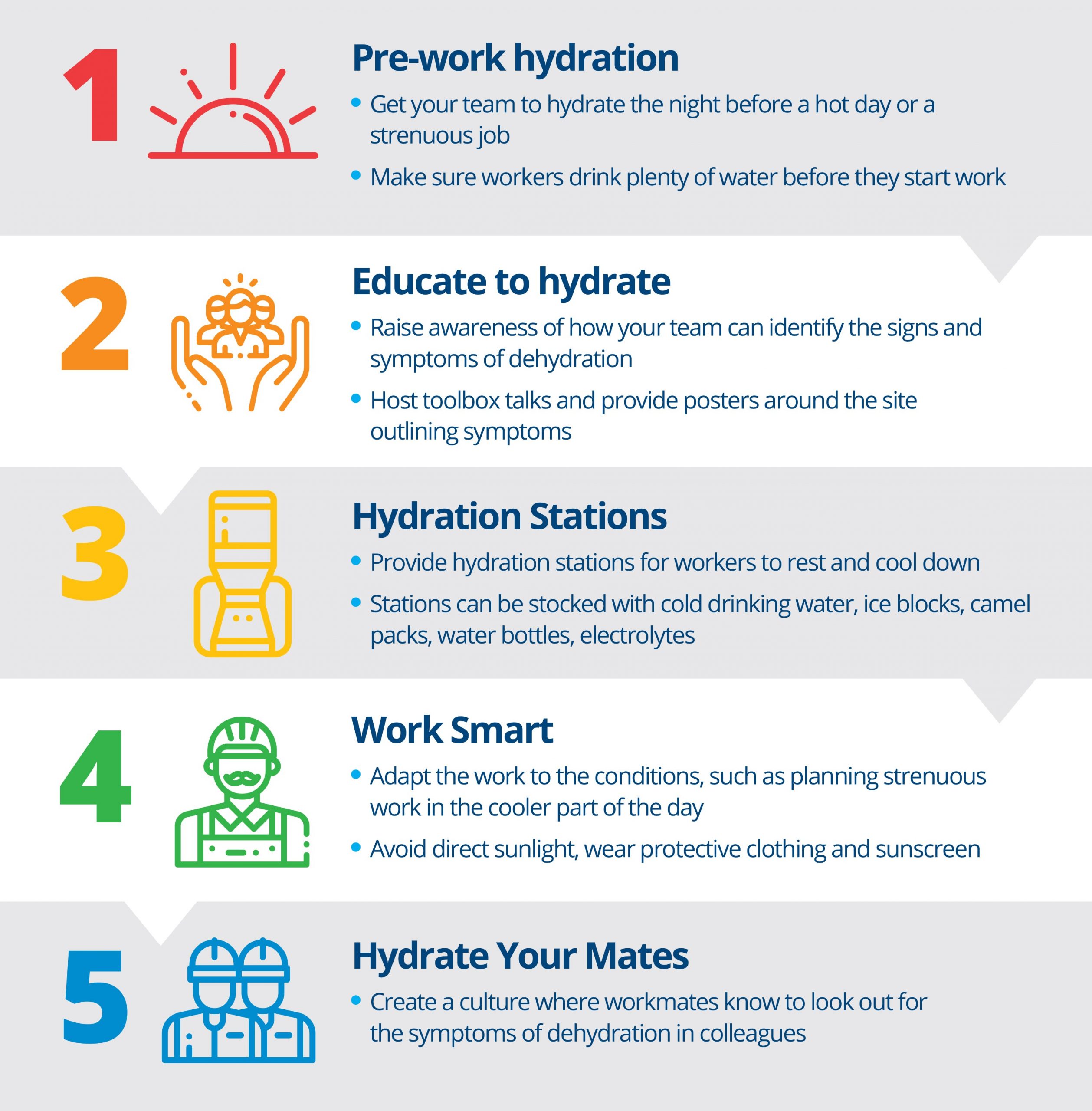
Top 5 Tips to Avoid Dehydration on your Site
Top 5 Tips to Avoid Dehydration on your Site
Dehydration can have a huge impact on worker safety and performance, especially in physically demanding industries such as civil construction and mining.
How much water a person needs depends on their age, gender, work activity and the environment they’re in. Generally speaking, two litres of water a day is recommended to maintain healthy hydration, but if environmental conditions or level of physical activities change, more water is required to replenish the body.
Here are our tips on how you can set up your team to perform their job safely.

- Start with hydrated teams
If your team start the day dehydrated it’s unlikely they’ll be able to rehydrate on shift due to the metabolic workload and sweat rates generated while working. To maintain a state of hydration, it’s recommended they drink 500ml – 1 litre an hour, taking in small amounts every 15-20 minutes.
This means the night before a hot day or a job that is strenuous it’s important they drink plenty of water. When they wake in the morning they need to continue drinking water with the aim to have clear to straw colour urine clear before they start work. This is the best form of defence from dehydration and subsequently fatigue.
If workers arrive dehydrated, they’ll be unable to rehydrate.
- Raise awareness of symptoms:
The body tells you when it’s dehydrated, educate workers on what symptoms to look out for such as dry mouth, headaches, thirst, fatigue, dizziness, lack of concentration, infrequent urination or dark urine.
- Provide Hydration Stations:
Make sure water is part of work kits and that hydration stations are accessible on site. Supply cold drinking water, ice blocks and electrolyte replacement solutions which have less sugar than juice and more electrolytes than sports drinks. Ensure workers avoid sugary drinks in general as well as and caffeine as they don’t restore lost electrolytes, are less effective at rehydration and are calorie dense.
Consider using different types of water dispensing options such as camel packs which can be worn and used every 5-10 minutes.
Depending on the conditions, ensure hydration breaks are taken every hour for 10-15 minutes.
- Work Smart:
Adapt the work to the conditions to minimise dehydration. Ensure the work itself is carried out at a steady pace and organise more strenuous outdoor work in the cooler parts of the day i.e. morning or late in the afternoon. Avoid work in direct sunlight as sunburn prevents the body from cooling down.
Make sure workers are protected with light-coloured clothing, hats and use UV protection sunscreen and sunglasses. Wearing loose clothing encourages airflow to reduce sweating.
- Hydrate your mates:
Hold toolbox talks on how to identify the symptoms of dehydration and create a culture where they are encouraged to look out for their workmates safety.









